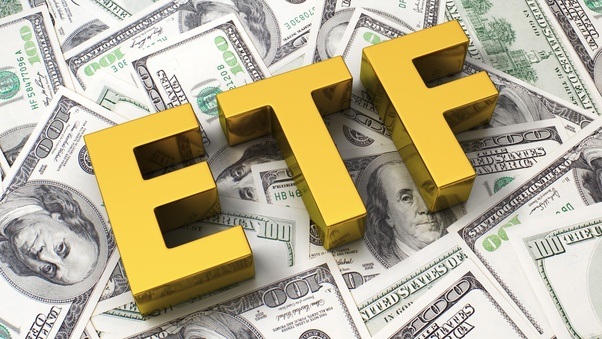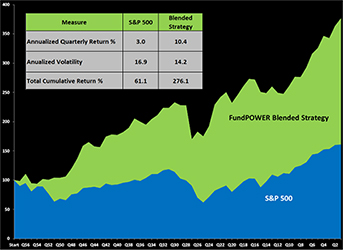We have all heard these terms but what do they mean to us in terms of our investments? What do we need to be aware of when investing in funds? Do all these matter or are some less impactful on our investments than others?
Let’s start with Management fees and expenses.
Actively managed mutual funds have high operating, marketing and selling costs. Hence the fees and expenses that you pay indirectly are also high (– anywhere from about 1% to 6%). Expenses charged to the fund also include money spent on market data, trading, or brokers’ commissions paid by the fund to buy and sell securities contained in the fund. In contrast, fees and expenses of index funds (which are passively operated mutual funds) are low (– generally less than 1%). ETFs have the least management and administration fees, and operating expenses.
Should management fees and expenses matter to us?
They matter only when you are trying to understand what expenses are being incurred by the fund you are investing in. But do they matter when you are trying to understand the returns on your investments? In our opinion, the simple answer is NO, fees and expenses don’t really matter. What matters is your net return. You would ask “Why not?” Well here’s why not: The price of each share of a fund (the NAV), is the price at which you can buy or sell shares in the fund. It is NET of all expenses and fees. When you buy shares in a fund, you purchase at the NAV. When you sell shares of a fund, you again do this at the NAV (remember, this is net of fees and expenses). So, if you buy and sell at NAV (net of expenses) why does it matter if fees are high?
All you should be concerned about is your net return on investment. You want to make sure your money is invested in funds that give you good net returns, while taking acceptable risk. As long as you are getting those good net returns on your investment, fees and expenses don’t really matter. E.g. If Fund A has 5% in expenses and the NAV growth is 20% at low risk, while Fund B has only 2% in expenses but the NAV growth is only 5% at the same risk as Fund A, you would want to invest in Fund A. Expenses are higher in fund A, but the net return on your investment is 20% compared to 5% in Fund B, and both have comparable risk! It’s a no brainer, isn’t it?
For index funds or ETFs, fees and expenses are minimal. Therefore, this is not a relevant question for them.
Now, let’s talk about loads and additional charges such as transaction fees while buying or selling.
What are loads? Loads are additional charges that are collected by the broker or fund company. These are sales charges or commissions that a broker or financial advisor charges the investor, in return for the services being provided to the investor!
Mutual funds are available for buying and selling, without any loads, or with loads. Whether a fund has load or no load is decided by the share class of the fund, and also many times, by the broker from whom you are buying the fund. Loads can be “Front-End Loads” or “Back-End Loads.”
When you buy a front-end load fund, you spend about 2 – 6% (with some fund share classes, even more) upfront. For example, if the front-end load is 5%, then for every $100, you give the broker to invest in a fund, the broker takes $5 upfront from you and invests only $95 in that fund.
With back-end load funds, the broker will take out about 2 – 6% before giving you the balance, when you sell the fund. For example, if the back-end load is 5%, when you sell $100 of the fund, the broker takes $5 and gives you back $95, the net proceeds from the sale. Back-end load funds can also have restrictions on how soon you can sell them without incurring the back-end sales charges. The minimum holding period depends on specific fund share classes and brokers. It can range from 3 months to many years.
In any case, the net return you get will equal the gross return minus the money you spent on the load. Therefore, Loads Do Matter! If you have an option to avoid loads, then you should!
This is where no-load funds come into play.
Funds without any load are called no-load funds. Generally, if you manage your own investments, then the fund company or broker will offer specific share classes of funds that are offered by the fund company as no-load funds. Sometimes they are called Investor Class (but not always). Many discount brokers (whether independent such as Schwab, E-Trade, or even those operating as divisions of a fund company, such as Fidelity) offer a list of about 2 to 3 thousand no-load funds even if you manage your money yourself.
If you have a managed account with your broker, advisor or the fund company, they might have load funds on their list, which they may offer to you as “No-Load.” But let’s be clear here, they are doing you no favor! They may not charge you’re a “load” but they are recovering the cost indirectly through the additional fees being charged for managing your account. Don’t forget those fees of 1% – 4% that you pay to your advisor, broker or fund company, for managing your money!
No-load funds are better for investors, since you avoid paying more money for buying or selling funds. Loads will directly reduce your net returns, and you will lose the financial flexibility to get in and out of the fund monthly or quarterly.
And remember, there is no major difference between the return potential of load-funds versus no-load funds. Funds manage both share classes the same way. The fees and operating costs are generally the same. There was a time when fund companies and brokers figured out a way of making more money by letting people believe that load-funds would give better returns! But investors became smarter, and complained. So now, most who know, buy only no-load funds.
Yet many oblivious investors or retirees, young or old, are being sold billions of dollars worth of load funds each year by brokers, fund companies and sometimes even advisors! It’s a sad situation and investors are urged to BEWARE and be smart about their investments. Avoiding loads and fees by managing your investments yourself can add up to thousands of dollars of savings for you. And getting a little smarter about managing your hard earned money is not very difficult!
Remember, generally index funds have no loads, and ETFs are treated like stocks by brokers, and there are no loads for buying or selling. But of course, there are other transaction charges as commissions for buying and selling.
Let’s now talk about other transaction charges.
Whether you are trading load-funds, no-load funds, index funds or ETFs, you should ensure that the transaction charges or commissions per trade, or other service costs charged by your broker are acceptable, and are not their back-door way of making more money, without you knowing about such charges!
Some brokers waive transaction costs for some mutual funds or index funds. Without going into details, remember that they will do what’s best for them, not for you. So ask questions to your broker!
Finally, about the minimum amount of initial investment……
Another thing to remember is the minimum amount for initial investment and minimum amount for additional investments you make. This depends on the share class and broker. Most brokers will offer you investor class funds. These don’t need more than $250 – $10,000 as the initial amount. They also don’t need large amounts for additional investments. But different brokers and advisors allow different initial minimum and subsequent amounts. So check with your broker or advisor before working with a list of their funds to use in your account.
In summary, we say, don’t fret about expenses and management fees for mutual funds, but be aware of “loads” and fees charged for managed accounts and negotiate those down or out. Ask lots of questions and get clarity on transaction fees and minimum investment amounts. It’s your money and you have every right to protect it! And remember, in the financial industry, the only one who selflessly looks out for your financial success is YOU!



